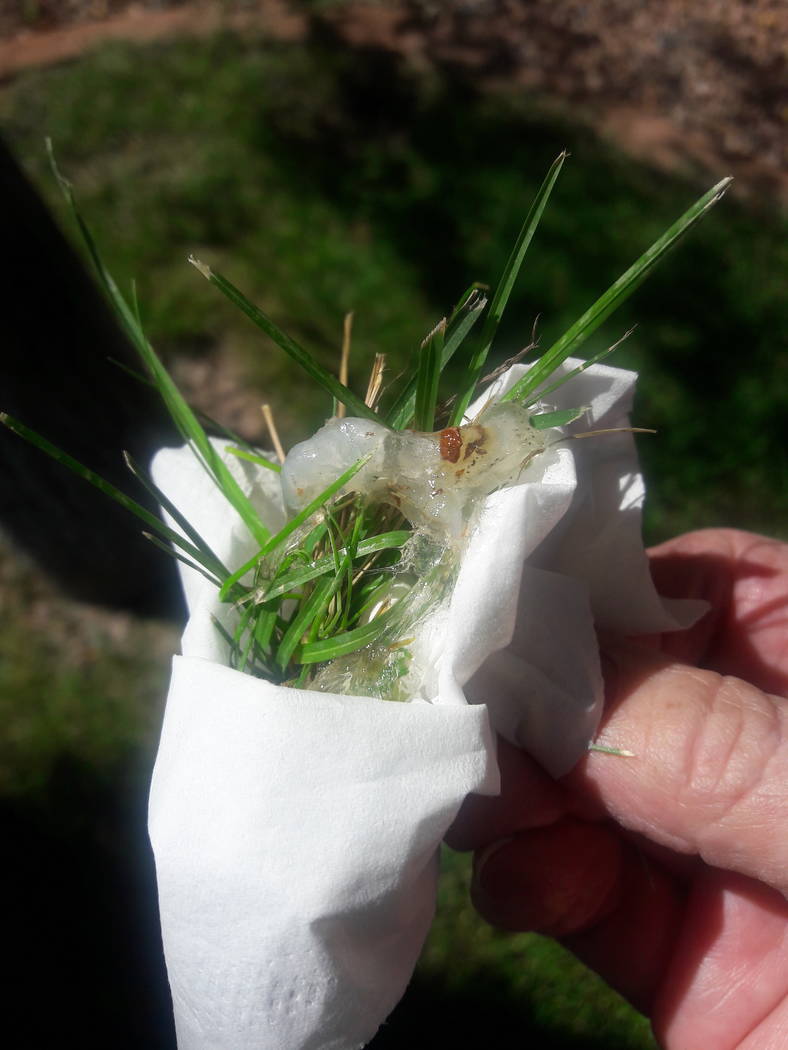Mysterious Lawn Growth: Identifying the Clear Jelly-Like Substance
The Baffling Appearance of Slime Molds
A clear jelly-like substance on lawn can be a perplexing sight for homeowners. This mysterious growth often appears as a translucent, slimy patch on the grass, leaving many to wonder what it is and how it got there. The substance is frequently mistaken for a type of fungus or algae, but its true identity remains a mystery to many. In reality, this clear jelly-like substance on lawn is a fascinating organism that plays a vital role in the ecosystem.
What is Slime Mold and How Does it Grow?
Slime mold, also known as myxomycetes, is a type of organism that belongs to the kingdom Protista. It is a fascinating creature that exhibits characteristics of both fungi and animals. Slime mold grows on lawns as a result of ideal conditions, including high humidity, moist soil, and an abundance of organic matter. This clear jelly-like substance on lawn feeds on microorganisms, such as bacteria and fungi, breaking them down into simple nutrients that can be absorbed by plants.
The life cycle of slime mold consists of two main stages: the amoeba stage and the plasmodium stage. In the amoeba stage, individual cells move freely, feeding on microorganisms and multiplying rapidly. As the cells grow and multiply, they eventually come together to form a giant cell called a plasmodium. The plasmodium stage is characterized by a large, slimy mass that can move slowly over the lawn, engulfing and digesting organic matter in its path.
Slime mold grows rapidly, often covering large areas of the lawn in a matter of days. It can appear in various colors, including white, yellow, pink, and black, depending on the species and the type of organic matter it is feeding on. Despite its rapid growth, slime mold is a harmless organism that plays a vital role in the ecosystem, helping to break down organic matter and recycle nutrients.
How to Identify Slime Mold on Your Lawn
Identifying slime mold on your lawn can be a fascinating experience, but it requires a keen eye for detail. Slime mold can appear in various shapes, sizes, and colors, making it essential to know what to look for. Here are some tips and guidelines to help you identify slime mold on your lawn:
Texture: Slime mold has a distinctive slimy texture, often compared to a clear jelly-like substance on lawn. When touched, it feels soft and gelatinous, but not sticky or tacky.
Color: Slime mold can appear in a range of colors, including white, yellow, pink, black, and even transparent. The color may vary depending on the species and the type of organic matter it is feeding on.
Shape: Slime mold can take on various shapes, from small, rounded blobs to large, sprawling networks of tendrils. It may also form a crust-like layer on the surface of the lawn.
Size: Slime mold can range in size from a few millimeters to several meters in diameter. The larger specimens are often more noticeable and can be quite impressive.
Images: For a better understanding of what slime mold looks like, it’s helpful to consult images or descriptions of different species. This can aid in identification and help you determine whether the clear jelly-like substance on your lawn is indeed slime mold.
Other signs: Slime mold often appears in areas with high humidity and moisture, such as near water features or in shaded areas. It may also be accompanied by a strong, earthy odor, which is a result of its decomposition process.
The Harmless Nature of Slime Mold
One of the most common concerns among homeowners who discover a clear jelly-like substance on their lawn is whether it poses a threat to their pets or the lawn itself. Fortunately, slime mold is completely harmless to both. It does not produce any toxins or allergens that could harm animals, and it does not cause any significant damage to the lawn.
In fact, slime mold plays a beneficial role in the ecosystem. As it feeds on microorganisms, it helps to break down organic matter and recycle nutrients, making them available to plants. This process can actually improve soil health and fertility, leading to a more vibrant and thriving lawn.
Slime mold is also a natural indicator of a healthy lawn ecosystem. Its presence suggests that the soil is rich in organic matter and microorganisms, which is essential for a balanced and diverse ecosystem. By embracing slime mold, homeowners can take pride in knowing that their lawn is a thriving hub of biodiversity.
It’s worth noting that slime mold is not a pathogen and does not spread disease. It is simply a unique and fascinating organism that has evolved to thrive in specific environments. By understanding and respecting its role in the ecosystem, homeowners can learn to appreciate the unique charm of slime mold and the benefits it brings to their lawn.
How to Encourage Slime Mold Growth (or Not)
While slime mold is a natural and harmless phenomenon, some homeowners may want to encourage its growth on their lawn, while others may prefer to discourage it. Here are some tips on how to create an environment conducive to slime mold growth, as well as how to prevent it from appearing.
To encourage slime mold growth, maintain a moist lawn by watering it regularly, especially during dry spells. Slime mold thrives in humid environments, so keeping the soil consistently damp will increase the chances of its appearance. Additionally, leave organic matter such as leaves, twigs, and grass clippings on the ground, as slime mold feeds on these microorganisms.
On the other hand, if you prefer not to have slime mold on your lawn, there are steps you can take to discourage its growth. Improving lawn drainage by aerating the soil or installing a French drain can help reduce the moisture levels that slime mold requires. Reducing shade by pruning trees or removing obstacles can also make the environment less conducive to slime mold growth.
It’s worth noting that slime mold is a natural part of a healthy lawn ecosystem, and attempting to eradicate it completely may not be the most effective or environmentally friendly approach. Instead, consider embracing this unique and fascinating organism as a sign of a thriving lawn.
By understanding the conditions that encourage or discourage slime mold growth, homeowners can take a proactive approach to managing their lawn and appreciating the clear jelly-like substance on lawn that appears as a result.
Common Misconceptions About Slime Mold
Despite its fascinating appearance, slime mold is often misunderstood and shrouded in myth. One of the most common misconceptions is that slime mold is toxic or poisonous to pets or humans. However, this is simply not true. Slime mold is a harmless organism that does not produce any toxins or allergens that could harm animals or people.
Another misconception is that slime mold can spread disease or cause infections. This is also a myth with no scientific basis. Slime mold is a natural part of the ecosystem and plays a vital role in decomposing organic matter, but it does not have the ability to transmit diseases.
Some people believe that slime mold is a type of fungus or algae, but this is also incorrect. Slime mold is a unique organism that belongs to the kingdom Protista, and it has its own distinct characteristics and life cycle.
It’s essential to set the record straight and provide evidence to support the facts. By understanding the truth about slime mold, homeowners can appreciate its unique characteristics and benefits, rather than viewing it as a nuisance or threat. Remember, the clear jelly-like substance on lawn is a natural and harmless phenomenon that can add charm and character to your outdoor space.
Slime Mold Lookalikes: What Else Could it Be?
While slime mold is a unique and fascinating organism, it can be mistaken for other substances that resemble its clear jelly-like appearance. One common lookalike is dog vomit, which can have a similar texture and color to slime mold. However, dog vomit typically has a more irregular shape and a stronger odor than slime mold.
Another substance that may be mistaken for slime mold is algae, which can grow on lawns and have a similar slimy texture. However, algae is typically green or blue-green in color, whereas slime mold is usually clear or white. Additionally, algae tends to grow in more uniform patterns than slime mold, which can grow in irregular shapes and sizes.
To differentiate between slime mold and its lookalikes, it’s essential to examine the substance more closely. Slime mold typically has a more gelatinous texture than dog vomit or algae, and it may have a more vibrant or iridescent color. Additionally, slime mold tends to grow in areas with high levels of organic matter, such as near decaying leaves or branches.
By understanding the differences between slime mold and its lookalikes, homeowners can accurately identify the clear jelly-like substance on lawn and appreciate its unique characteristics. Remember, slime mold is a harmless and fascinating organism that can add charm and character to your outdoor space.
Conclusion: Embracing the Unique Charm of Slime Mold
In conclusion, the clear jelly-like substance on lawn that has been causing confusion among homeowners is, in fact, slime mold. This fascinating organism is not only harmless to lawns and pets but also plays a vital role in decomposing organic matter. By understanding its life cycle, ideal growth conditions, and unique characteristics, homeowners can appreciate the benefits of having slime mold on their lawns.
Remember, slime mold is not a type of fungus or algae, and it does not pose any threats to human or animal health. Instead, it is a natural and integral part of the ecosystem, adding charm and character to outdoor spaces. By embracing the unique characteristics of slime mold, homeowners can cultivate a deeper appreciation for the natural world and the fascinating organisms that inhabit it.
So, the next time you notice a clear jelly-like substance on lawn, take a closer look and appreciate the intricate beauty of slime mold. With its fascinating life cycle and beneficial role in the ecosystem, slime mold is truly a wonder of the natural world.






